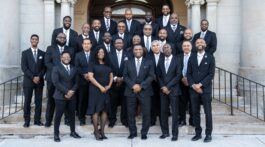(This is the third and final part of a series. To access part one click here.)
The difference between Christ and Paul in how they taught the gospel is a matter of their differing contexts. Jesus Himself was the gospel in real time, day by day advancing the kingdom of God against the devil’s domain of disease, dysfunction, deceit, disbelief, disobedience and death. Paul came on the scene only after Christ’s life and death and resurrection had brought life and immortality to light through the gospel. His role was to proclaim that good news and defend it from counterfeit soteriology.
That’s what he was doing in the book of Romans, confronting those trusted in their own keeping of God’s law to be saved. His strategy was to debunk Jewish legalism before presenting the true gospel of life in Christ. This he eloquently accomplishes in the first three chapters, exploding any hope of getting good with God by meritorious law-keeping. (See Rom. 3:19, 31.) He summarizes the dismantling of legalism by pointing to the patriarch Abraham as the father of faith, declaring: “If it is the adherents of the law who are to be the heirs, faith is null and the promise is void” (Rom. 4:14).
Next he promotes Abraham as exhibit A of how to exercise gospel faith in “the God in whom he believed, who gives life to the dead and calls into existence the things that do not exist” (verse 17). “He did not weaken in faith when he considered his own body, which was as good as dead (since he was about a hundred years old), or when he considered the barrenness of Sarah’s womb. No distrust made him waver concerning the promise of God, but he grew strong in his faith as he gave glory to God, fully convinced that God was able to do what he had promised. That is why his faith was ‘counted to him as righteousness’” (verse 19-22).
Here we see that accepting God’s life-giving provision of the gospel is the antidote for legalism. Believers cease trying to gain salvation through the law and instead embrace new life in Christ. This is how Abraham was saved as well.
So the solution for sinfulness is not law-keeping but life in Christ. This is because sin involves not only guilt—the death of innocence—but equally the death of relationality with God and humanity (alienation), the demise of love (character), pure motives (integrity), and ultimately the end of our very existence. Salvation restores life in all of its abundance through Christ. Although this includes forgiveness instead of condemnation, the bottom line of faith in Christ is life itself instead of death.
But wait—aren’t we saved by grace through faith? Indeed. But what are we saved from? First and foremost, death. We see this in the “grace chapter,” Ephesians 2, which begins by bluntly describing all humanity as “dead in trespasses and sins” (verse 1). We are lifeless outside of Christ, not just guilty and hopeless. “But God, being rich in mercy, because of the great love with which He loved us, even when we were dead in our trespasses, made us alive together with Christ—by grace you have been saved” (verses 4, 5).
Grace, by the way, also involves much more than forgiveness of sin. The Greek word translated “grace” means undeserved favor of any kind, such as “grace to help in time of need” (Heb. 4:15-16; see also 1 Cor. 15:10, 2 Cor. 9:8, Eph. 4:29, Col. 4:6).
So even the evangelicals’ favorite teaching chapter on grace, Ephesians 2, is set in the context of death vs. life more than guilt vs. forgiveness. If there is yet any doubt about the primacy of life vs. death in Paul’s soteriology, consider his most extended and explicit definition of the gospel and its meaning—1 Corinthians chapter 15. In all of its 58 verses, in which Paul specifically identifies, defines and describes the gospel, there is not even one mention of justification, forgiveness, pardon or guilt. It’s all about life triumphing over death through Jesus. Christus victor is the resurrected representative of a new humanity that replaces fallen Adam’s mortal race. Saving faith involves taking our place in the Son and identifying with His accomplishments instead of trusting in our own.
“This is the testimony, that God gave us eternal life, and this life is in His Son. Whoever has the Son has life” (1 John 5:11-12). He preserves our names in the “Lamb’s Book of Life” (Rev. 3:5) and will feed us eternally from the “tree of life” (Rev. 2:7) and give us to drink from the “water of life” (Rev. 22:17) from the “river of life” flowing out of His throne (Rev. 22:1). When everything is said and done about salvation, the bottom line is life in Christ.
To summarize: The evangelical conflict between the teaching of Jesus vs. Paul is a crisis of our own making. This is because we have overlooked the common denominator throughout the New Testament: salvation is a fundamentally a matter of life in Christ vs. death—of which forgiveness vs. guilt is just a subset. Believers reign in life through the kingdom of God because Jesus conquered death and rose in victory.











[…] More on this in part three. […]